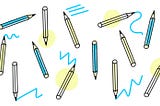Nov 14, 2017
Dec 30, 2021
7 stories
Ben Hersh's product writing guide is concise and tactical in nature; you could print this out and keep it on your desk for the next time you write. The section about how to make your writing feel appropriate given different contexts is especially useful.
Speaking from the perspective of a UX writer, Anjana lists what she considers when she writes for Spotify users.
One unexpected tip she shares is to pressure test your writing by translating it into different languages.
Abhijay left a short but insightful list of writing tips in response to Anjana's article above, 8 Lessons in UX Writing.
This is a writing tip I stumbled across recently in a book I've been reading. I find it to be a useful way to get started with what the product will say early on in the design process.
With a background in journalism, Yeal shares the importance of storytelling and progressive disclosure. By structuring and ordering the information in the right way, you can communicate more clearly and increase engagement.
Here's another one by Ben Hersh that's a long-read gem. He shares three simple rules for copywriting (be clear, friendly, and expressive) and finds fun and interesting ways to illustrate their importance. A lesson that stood out to me was to make writing easy to read by making it easy to say.
Dave writes, "Instead of trying to get inside of your customer’s head or staring at a blank screen thinking to yourself “what would a customer say?” you can go out and find those messages to use in your copy..."








